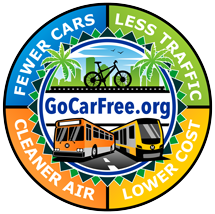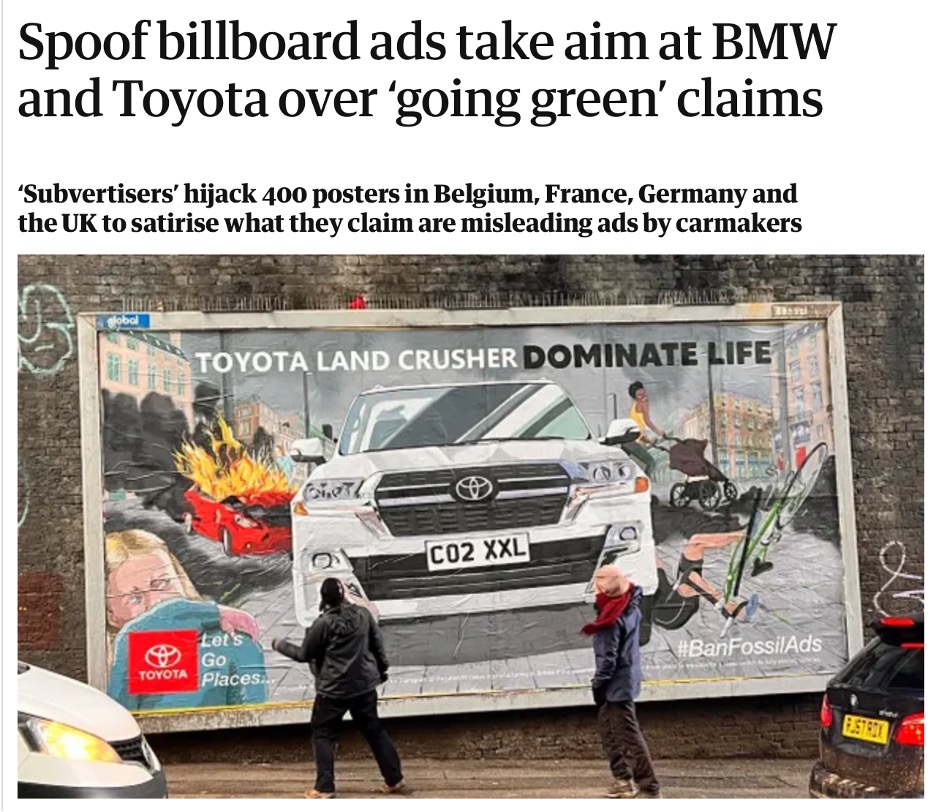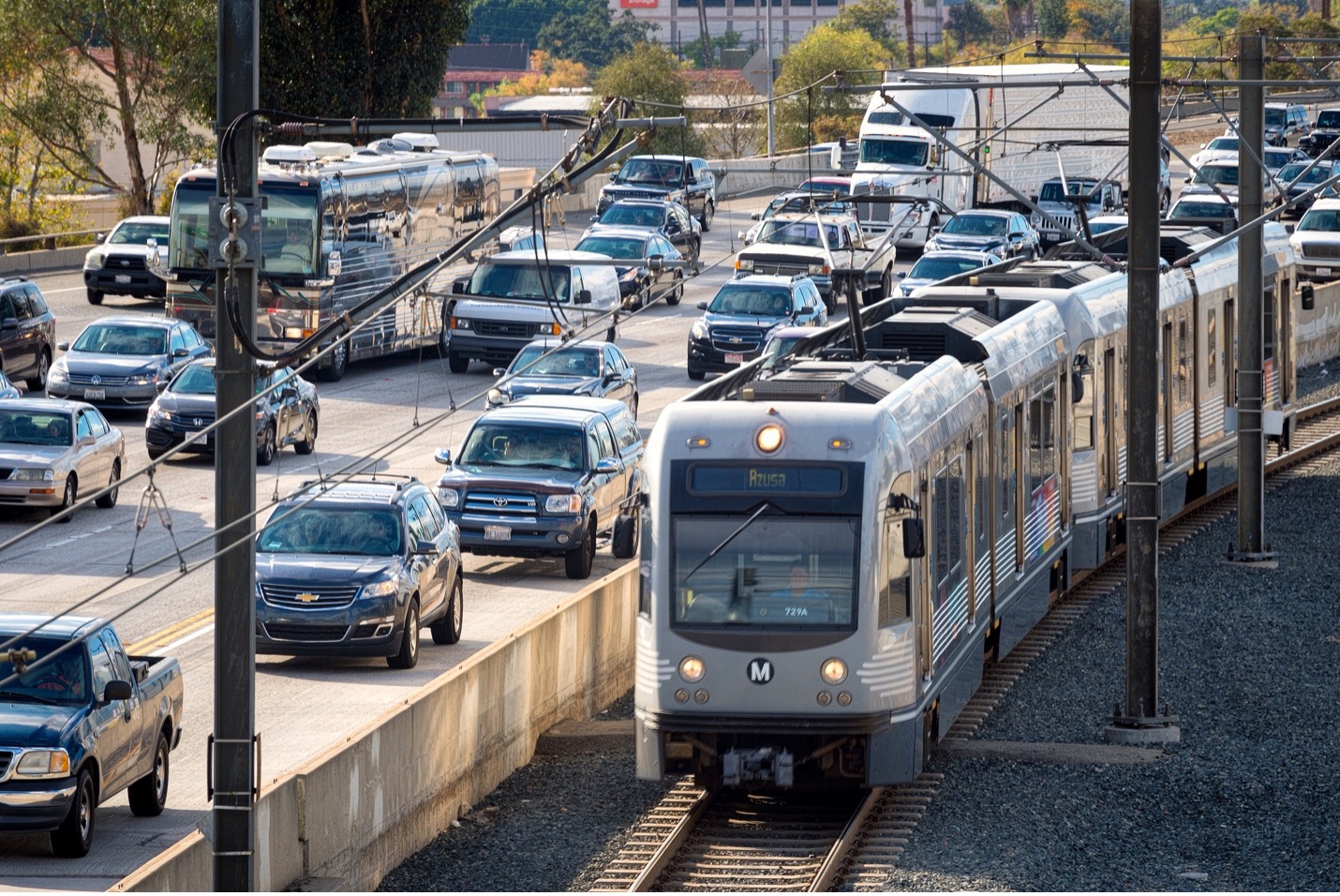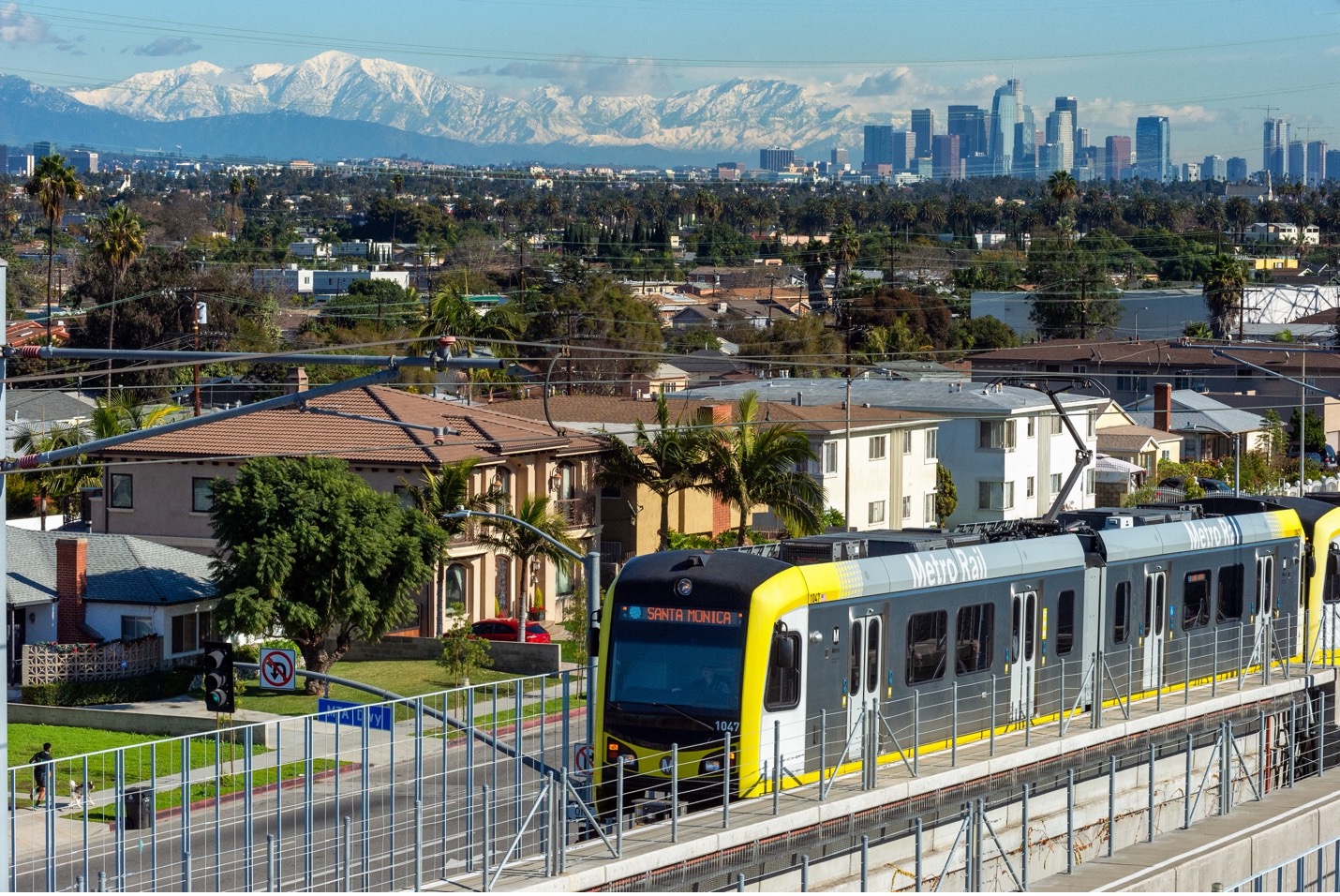
Lesson 5
You Can Live without a Car (But can you Live Well?)
“We do not inherit the earth from our parents, we borrow it from our children.”
– William Clay Ford, Jr., CEO, Ford Motor Company
As you learned in the previous lessons, there are many compelling reasons not to own a car. Then why do so many people have one? Or more to the point, why do people feel they need one? In my opinion, there are two reasons: one simple, one insidious.
Our Self-Perpetuating Car Culture
Owning a car seems like a normal life necessity because most Americans literally grew up in cars. After we were born, our first experience outside the hospital was riding home in a car. We were raised in two-car families. We spent our formative years comfortably cocooned in car seats. As children, we ate and napped in cars. We watched our parents drive to work, to the bank, to the gas station, to soccer practice, and to the drive-thru, and basically spend much of their lives behind the wheel.
As teenagers, most of us gradually joined the car culture our parents, purposefully or unknowingly, instilled in us. We eagerly anticipated getting that driver’s license. We drove to proms, practices, jobs, and college in cars. So it’s no surprise that when we became adults we blindly followed the example set by our parents. When we got our first job, we applied for a loan and went into debt to buy our first car.
From the US Census:
61 million adults live in households with two cars. And another 54 million adults live in households with three or more cars.
From birth, cars are as much a part of daily existence for most Americans as eating and sleeping. It’s no wonder we don’t question why or even whether we need a car—we just accept it as a necessary part of life.
My wife and I are proud to be raising our children differently. We are car free even though we have two young children. Take a look at this video of my wife doing her four-mile daily bicycle commute to work (eight miles round trip)… while six months pregnant.
Car Free Success Story:
Advertisers and automakers have spent the better part of a century telling us that cars are a symbol of freedom. So it’s hard for people to see that they’re much more free when they get rid of their car.
Advertising: A Powerful Force
The second reason we feel a natural, almost innate need to own a car is the aggressive advertising and marketing done by the automobile and oil industries. Studies indicate that citizens of the United States see as many as three thousand advertisements each day. That’s about one every twenty seconds. And nearly 20% of those are car or car-related advertisements.
The auto industry buys more advertising than any other business in the world. Advertising spending on cars, trucks, SUVs, gasoline, motor oil, and related products exceeds $40 billion annually. Three of the six largest advertisers in the U.S. are automakers.
And there’s no question automobile ads are effective. Car companies employ the brightest creative minds on Madison Avenue to craft ad campaigns that work on both conscious and subconscious levels. Occasionally car ads tout the features of certain models. But most automobile advertising promises the intangibles: image, status, sex appeal, fulfillment, and freedom. Car ads show attractive young people (actors) in sporty coupes zipping along empty roads smiling and having a good time. They never show cars stuck in traffic, in line at the gas pump, polluting the air, or mangled in fiery crashes.
From the US Census:
131,881,000 people commute to work by driving a car, truck, or SUV. And 90% of those people (117,967,000) drive one person per vehicle, or SOV (single occupant vehicle).
Automakers, oil companies, and the advertising industry have been playing on the same powerful team virtually since the automobile was invented. That’s more than a hundred years and hundreds of billions of dollars spent with one goal in mind… to make every adult in America think he or she needs a car. As the saying goes, if you say something loud enough and long enough, people will start to believe it.
Car Free Success Story:
Years of car advertising promise that if you own the right car, it will fill all the voids in your life. One thing these ads constantly emphasize is the safety factor: “Own a Volvo, it will keep you and your children safe.” This is an outright lie, and they ought not to be allowed to say it or even imply such a level of safety. If you think about it, the same misleading techniques were used to advertise cigarettes.
Misleading Advertising Fosters Car Addiction
When I was pitching the news media on doing a story about car free lifestyles, one skeptical editor said to me, “Chris, I don’t think people will give up their cars, because people in this country love their cars.” Not only is that a sweeping generalization of two hundred million car owners, it’s also untrue for most of them.
There certainly is a small percentage of people who truly love cars. These are the folks who read car magazines, watch automobile television shows, and wash their car twice a week. The extreme ones even enjoy changing their own oil – good times! Yes, it would be fair to say that these people “love” their cars.
But the vast majority of car owners in this country do not have a love affair with their car; they have an addiction to it. And like any addiction, it’s a costly one. Most Americans spend their entire adult lives feeding this addiction with precious time and money simply because they haven’t tried any other way; they don’t know there is a viable alternative to a car-based existence.
But here’s the good news. First, in most cases, all it takes to cure car addiction is access to the right information, some motivation, and mild lifestyle reengineering. As Katie Alvord writes in her book Divorce Your Car!, “Auto dependency is a psychological addiction, not a physical one.” And second, it’s never too late to change your ways and get on the car free path to financial freedom.
Read this fascinating article from The Guardian about how activist groups like Extinction Rebellion cleverly called attention to misleading car ads. They say these spoof billboards tell the truth about carmakers’ dishonest claims of being environmentally conscious.

Car Free Success Story:
National transportation policy, especially since World War II, has effectively been controlled by General Motors, Exxon, and their associates. These corporations have used their considerable political influence to ensure that highways get funded and transit systems don’t, creating an extensive system of subsidies to encourage driving cars and discourage alternatives. The automobile-centered U.S. transportation system has been created to maximize profits, not to enhance personal mobility.
The Truth
Despite what all those brilliant automobile advertising execs want us to believe, the truth is that tens of millions of working Americans don’t need to own a car. One basic premise of this course is that if you can get to work reliably without a car, you don’t need to own one.
Are there exceptions? Sure. Outside sales representatives who use their cars to make sales calls would have a hard time living car free. Construction workers who haul heavy tools need their pick-up trucks. And people with special medical needs or family responsibilities probably need a car. But chances are, if you don’t need a vehicle for your job, and you don’t have any special travel needs or family circumstances, you are probably a candidate for going car free – or at least going car lite.
Car Free Success Story:
Though the automobile is widely advertised as necessary to adulthood, success, freedom, and sex appeal, I’ve found this to be an illusion. Cars are three-thousand-pound strollers confining healthy adults to a childish dependence on wheels. They trap people in traffic jams that waste years of life while making bodies frail. They burden people financially. There’s a cost to living outside the box. But there’s a greater cost living inside it.
Alternatives to Owning a Car
Shifting from car dependency to a car free lifestyle does require an attitude adjustment. Right now, if you own a car you’re probably operating under the if-I-want-to-go-anywhere-I-have-to-drive mentality. The rest of this course will open your mind to new ways of thinking about transportation. There are oodles of options for getting where you need to go. You just don’t notice them because you’re accustomed to driving everywhere, so why would you notice the alternatives.
From the US Census:
131,881,000 people commute to work by driving a car, truck, or SUV. And 90% of those people (117,967,000) drive one person per vehicle, or SOV (single occupant vehicle).
Believe it or not, tens of millions of Americans – across all fifty states – commute to work without owning a car. According to the 2018 American Community Survey conducted by the U.S. Census Bureau:
- 7,575,000 people commute to work by public transit
- 13,914,000 people carpool to work
- 4,019,000 people walk to work
- 2 million commute by rideshare (Uber, Lyft, etc.) or taxi
- 158,000 commute by motorcycle
- 2.8 million occasionally commute by bicycle, moped, or scooter
- 773,000 regularly commute by bicycle
- 8,194,000 work remotely and do not commute at all
That’s more than 39 million people! And as more people become frustrated by soaring gas prices, exorbitant car prices, high interest rates, inflation, growing traffic jams, climate change, and the ever-increasing total cost of owning a vehicle, the number of car free commuters is increasing.
For example, during the COVID-19 emergency, mass transit ridership dipped sharply due to lockdowns, business closures, telecommuting, and fear of catching the disease. But now ridership on public transportation is surging. According to a February 27, 2023, press release from Los Angeles Metro, “The Los Angeles County Metropolitan Transportation Authority announced today a 12 percent increase in transit ridership compared to a year ago. There were 255 million boardings in 2022, surpassing the 227 million in 2021.” That’s a lot of transit riders.

Car Free Success Story:
Nearly every day I observe motorists, like so many mice in a maze, zooming away the gas, crowding the roads, white-knuckled, jockeying for position, racing to parking spots. You can have that! I’m so very happy that I’m not part of that anymore. My bike commute is frequently the best part of my day. I feel great when I get to work. I feel great when I’m riding. I feel great when I get home. Win-win-win.
I hear a lot of excuses – people telling me why they are slaves to their cars. I, too, could rationalize that if I wanted to. I’m a middle-aged guy. But I’ve ridden a bike to work – and for essentially all my local transportation – for twenty-plus years. I live four miles from work for a reason. The jammed roadways are packed with single-occupant vehicles. These motorists are angry – angry that the roads are crowded, yet unwilling to do anything personally to mitigate the situation. Angry that gas is so expensive, yet totally unwilling to accept any responsibility for the supply/demand curve. You’d think driving alone and cheap gas were God-given rights.
If you want to drive alone in your eighteen mpg SUV and live fifty miles from the office on “Heaven’s half-acre” and commute to work every day, that’s fine. I support your right to make that choice. But stop the incessant whining, willya? You’re part of the problem. And you alone must weigh the choices, and accept the consequences of those choices.
The Six Keys to Car free Living
There are six main criteria that determine whether you are a good candidate for car free living. If you answer yes to most of the following questions you should have an easy time transitioning to a car free lifestyle. If you say yes to only one or two of the six, we’ll show you strategies to overcome the sticky spots. And even if you answer no to every question, you can still go car free – but you will have to make some changes, such as where you live.
Can you get over your own ego?
Honestly, this is the toughest one for most people. The auto industry has done a fabulous job of convincing Americans that their status and self-worth are tied to their cars. So it’s perfectly natural for you to wonder, “Will people think less of me if I don’t have a car?”
I can tell you from personal experience, when you don’t own a car people do not assume you are financially unsuccessful; rather, they view you as someone who is independent, interesting, and lives in accordance with your values.
Most people admire those who are committed to their values and take action to make a positive change in society. So please don’t worry what others will think of you if you go car free; you will be pleasantly surprised at the reaction.
Plus, any anxiety you have about status will quickly evaporate when you see your bank account grow by thousands of dollars every year.
Car Free Success Story:
I’ve been car free for three years. I think the hardest part of making the decision to go car free is bridging the “I can do it” gap. In other words, most people have bought into the advertising message that cars are necessary and bikes are only for fun. Getting over that mindset is more difficult than actually living without a car. You’ll be surprised how easy car free life is once you try it. The concept can be intimidating at first, but you’ll quickly get over it. It’s a confidence thing. There is a learning curve for the typical car-reliant person, but nothing insurmountable.
Can you get to work reliably without a car?
If you can get from your home to your place of employment and back safely and on time without a car, then you don’t need to own a car. From bicycle commuting, to carpooling, rideshare, vanpool, public transportation, to scooters and other EVs, there are plenty of options for car-free commuting. We’ll explore all of them in this course.
Virtually all other errands and outings – such as going to the grocery store, the post office, shopping, and dinner with friends – are trips you can accomplish without driving. We’ll cover non-work transportation in part three of this course.
Now before you throw your hands up and say, “But the only way I can get to work is to drive,” remember what I said earlier. People who drive everywhere seldom notice alternative forms of transportation. So even if you’re absolutely convinced that driving a car is the only way you can commute to work, don’t despair. I’m willing to bet we’ll have that problem solved for you by the time you’re halfway through this course.

Do you live in an urban area, or in a mixed-use development?
People who live in or near cities will find it much easier to get around without a car. Cities have more transportation options, better pedestrian infrastructure, easier access to facilities, closer proximity to services and attractions, and housing is more concentrated than in rural communities. All these things make cities ideal for car free living.
I’m not suggesting you need to live in downtown Chicago. Many smaller towns have everything you need to live car free. And developers are now doing a much better job of creating mixed-use developments where schools, shopping, entertainment, and recreational facilities are built in among the new homes.
If you live in suburbia or out in the country, you may have to make some significant changes before you can live car free. But all is not lost. Keep reading.
Car Free Success Story:
You don’t need to be in a big city to live without a car. I have lived car free in Seattle, Thousand Oaks, California, Arcosanti, Arizona, and even the hill town of Jerome, Arizona. I love walking to nearby restaurants, to the theatre, and around the community.
Do you have access to public transportation?
According to the U.S. Census, 49 percent of Americans live near a transit stop. If you live within one or two miles of a bus line or subway stop, you’re golden. Two miles is an easy, healthy bike ride. One mile is an easy walk. And you’ll get your daily exercise on the way.
Plus, many bus lines these days are equipped with exterior bike racks, so you can easily pedal your bike to the bus stop, then load your cycle into the rack and hop on board. If you’re unfamiliar with the mass transit system in your area, we’ll help you figure it out in lesson 10.

Car Free Success Story:
My husband and I live car free in Toronto, Canada. It has allowed us to purchase a home and build up equity. The hardest part of living car free is being bombarded by automobile advertising, which leads to constant pressure to conform and drive like everybody else.
Do you live in close proximity to amenities?
It helps a lot if you live within five miles of the amenities that are important to you. For me, these include my fitness club, my church, movie theatres, parks and green space, a local farmers market, bars and nightclubs, a FedEx location, and bike paths. You will have to determine which amenities are essential to your lifestyle.
Are you flexible?
Being willing to make changes, try new things, and adapt to new situations is extremely helpful when you go car free. Because when you live without a car, you often replace old ways of doing things with new ways. If you deplore change of any kind, then perhaps the car free lifestyle isn’t for you. But you’d be surprised how quickly you can adapt to new ways of doing things.
“You must be the change you wish to see in the world.”
– Mahatma Ghandi
Car Free Success Story:
I live in Washington, D.C., and get around by walking, metro, and bus. I walk to and from work (about three miles round trip). All the car ads on television promote the idea that cars are synonymous with freedom. For me, not having a car is the real ticket to freedom – not getting stuck in traffic, not driving around for hours trying to find a parking spot, not worrying about having one’s car broken into, no insurance or high fuel prices to pay, no stress at the DMV, etc. In addition to these psychological, time, and financial benefits, not having a car is good for my health and the environment. I get valuable exercise walking to work, to the store, to meetings. And I’m not emitting climate-changing gases into the air.
What About Families with Children?
My wife and I have two children, ages 1 and 3, and we are car free. We live in Los Angeles, arguably the car capital of the country. How do we do it? Easy. We both have bicycles with child seats installed on the rear rack, and side baskets for cargo. Every morning I take my three-year-old daughter to school on my bike. And she loves it.

We also have quick-install child car seats which we install in about thirty seconds when we use Uber or Lyft – which is rare. There is a car free solution to almost everything.
If you’re a parent with children and you’ve answered yes to some of the six criteria above, you have an excellent chance of living car free. But first, skip ahead to Lesson 28: Are We There Yet: Advice for Parents with Children, and Two- and Three-Car Families. Perhaps that’s a better place for you to start.
Car Free Success Story:
I’m the senior network engineer at the University of California, Irvine. I’m also a single parent and a homeowner in Newport Beach, one of the most affluent communities in the country. There are various luxury auto dealerships in Newport Beach including Rolls Royce, Mercedes, Jaguar, Range Rover and Ferrari. Here I am, living amongst an auto culture living auto-free.
In Southern California everything is centered around the car. Given this, it’s still easy to live auto-free. I am able to get around by bicycle and public transportation with little effort. I see plays, films, concerts, and attend lectures. My commute to work is on a bicycle and I love it. Four of the seven miles of that commute is along a bike path adjacent to natural wetlands. Here, I don’t see any cars at all. There are many subtle pleasures of a car free lifestyle.
Can You Live Car free?
If you’ve read this far, chances are good that you are an excellent candidate for living car free or car lite. Tens of millions of Americans can do it, and I’m quite confident that probably includes you.
In the next lesson, I’ll walk you through my story and how I went from hopelessly car addicted to joyfully car free. You might be surprised to learn what 9-5 job I was working at the time I went car free. Hint: my hair had to be perfect.
